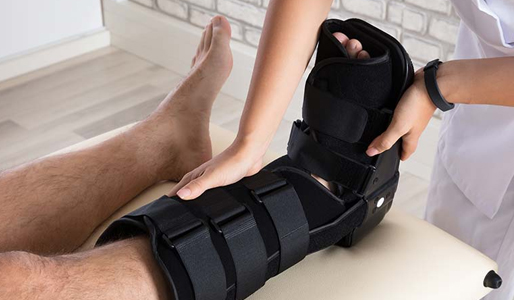Custom Orthotics/Braces Back


What are Custom Orthotics and Braces?
We do Custom Orthotics and Braces at Alliston Physiotherapy and Sports Rehabilitation and they are specially designed to help support, align, or correct the function of a part of the body, typically the feet, ankles, knees, or back.
Custom Orthotics are inserts or insoles designed to fit inside shoes. These are custom-made to an individual’s unique foot structure and biomechanics. They are often used to correct issues like poor arch support, imbalances in foot positioning, or conditions like plantar fasciitis, flat feet, or bunions.
Custom Braces are wearable braces that provide support, immobilize, or protect a joint or body part. For example, knee braces, ankle braces, or back braces. They are tailored to fit a patient's body and specific needs to address pain, instability, or injury recovery.
How They Help Patients
Both orthotics and braces play a critical role in improving mobility, relieving pain, and preventing further injury by addressing underlying structural issues or injuries. Here’s how they help:Orthotics: They can help prevent future injuries by correcting posture and distributing pressure evenly across the foot. This is particularly important for athletes or people who have repetitive stress injuries.
Braces: Custom braces provide additional stability and protection during physical activities, preventing further strain on already weakened or injured areas. For example, a custom knee brace might help prevent reinjury in athletes recovering from an ACL tear.
Orthotics: Since they are custom-made to fit an individual’s unique foot shape and needs, they provide superior comfort compared to over-the-counter insoles. This personalized fit helps avoid pressure points, blisters, or irritation that generic insoles might cause.
Braces: Custom braces are made to conform to the body and provide a snug fit. This reduces discomfort compared to one-size-fits-all models, which can sometimes cause rubbing or poor support.
Orthotics: Custom orthotics can help align the feet properly, which can, in turn, improve the alignment of the knees, hips, and spine. This can be especially beneficial for individuals with scoliosis, poor posture, or knee pain caused by misalignment.
Braces: In cases where an injury or condition has caused misalignment (such as scoliosis or knee instability), custom braces help realign and maintain proper joint function, reducing the risk of developing compensatory problems in other parts of the body.
Orthotics: For people with chronic foot conditions or injuries, wearing custom orthotics during recovery helps to minimize discomfort, allowing them to get back to normal activities sooner. They also support the healing process by reducing strain on the affected areas.
Braces: Braces are commonly used in rehabilitation after an injury or surgery to support the injured area while healing. They allow the body to heal naturally while minimizing the risk of complications from movement or instability.
Conditions That Benefit from Custom Orthotics and Braces
Here are some common conditions that benefit from custom orthotics and braces:Custom Orthotics
- Plantar Fasciitis: Orthotics can relieve pressure on the heel, reducing inflammation and pain.
- Flat Feet (Pes Planus): Orthotics provide arch support and reduce strain on the legs and lower back.
- Bunions: They help realign the toe and reduce discomfort caused by pressure.
- Heel Spurs: Orthotics can cushion and relieve pressure on the heel, promoting healing.
- Arthritis: Custom orthotics help reduce pain by redistributing pressure away from affected joints.
Custom Braces
- Knee Injuries (ACL Tears, Meniscus Tears, Patellar Tendonitis): Braces provide stability, control movement, and protect the joint during healing.
- Osteoarthritis of the Knee: A knee brace can reduce pain and prevent the knee from collapsing inward, offering relief for patients with joint degeneration.
- Ankle Sprains/Instability: Braces help stabilize the ankle and prevent further twisting or turning, aiding recovery.
- Back Pain/Spinal Support: Back braces can relieve pressure on the spine and provide support during activities, promoting healing from strains or injuries.